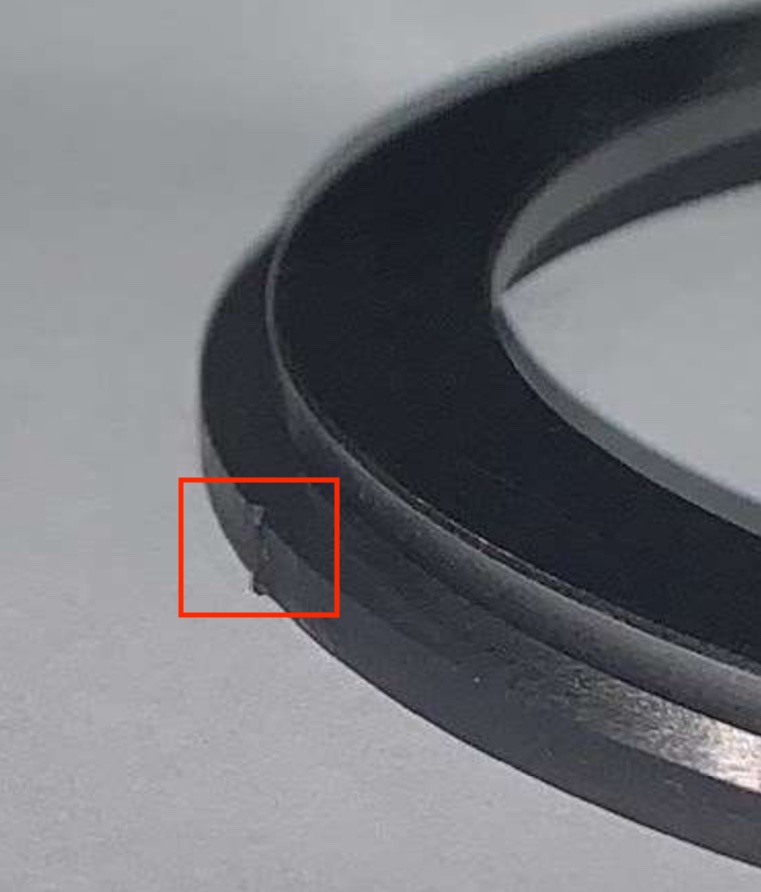Post-Cutting Nib Removal on Precision Flat Washer Parts2025-01-02
We encountered an issue with precision flat washer parts after cutting operations using laser cutting, where our quality team reported that both the inner and outer diameters had residual sharp nibs.

Cutting Nib on Precision Flat Washer Parts
These nibs, common in processes like laser cutting, water jet, or flame cutting, can interfere with assembly if the cut surface is intended for mating with other components. Below are possible causes of nib formation:
Material Properties: Certain softer materials, like aluminum due to their ductility or hardness, might deform more during cutting, leading to nibs.
Cutting Parameters: Incorrect settings such as speed, power, or focus in laser cutting can lead to uneven cutting and nib formation. Similarly, in water jet cutting, water pressure and abrasive flow rate can influence nib creation.
Tool Wear: In processes like flame cutting, worn nozzles or cutting tips can cause irregular cuts and subsequent nibs.
Design Considerations: Sometimes, the design of the part itself, like sharp internal corners or thin walls, can exacerbate nib formation.
Upon receiving the report, the engineering department immediately ground the parts to remove the sharp nibs, ensuring the dimensions remained within the specified tolerances for proper assembly.

Post-Cutting Nib Removal on Precision Flat Washer Parts by using grinding
After resolving this issue, the engineering department also developed the following preventive measures for the future:
Optimizing Cutting Parameters: Regular calibration and adjustment of cutting parameters to match material properties can reduce nib formation. For laser cutting, this might involve adjusting the laser power, speed, and focus.
Tool Maintenance: Regular inspection and maintenance of cutting tools to ensure they are in good condition, reducing the likelihood of nibs due to tool wear.
Design for Manufacturability: Modifying part designs to minimize sharp edges or stress points where nibs are likely to form. This might include adding slight radii to corners or adjusting wall thickness.
Post-Processing Automation: Implementing automated deburring processes or robotic finishing can ensure consistency and reduce human error in nib removal.
Quality Control Checks: Implementing strict inspection protocols post-cutting to catch nib issues early, allowing for immediate correction before parts move to assembly.
